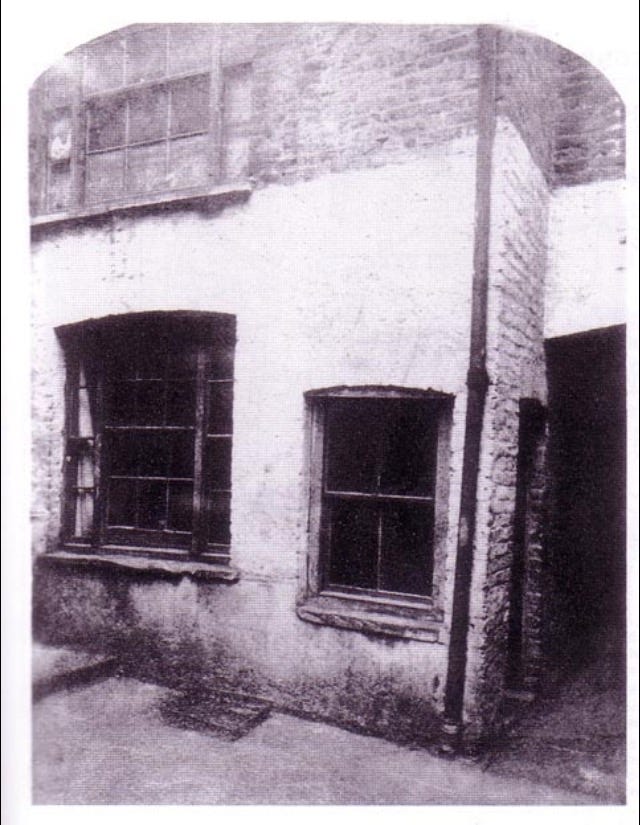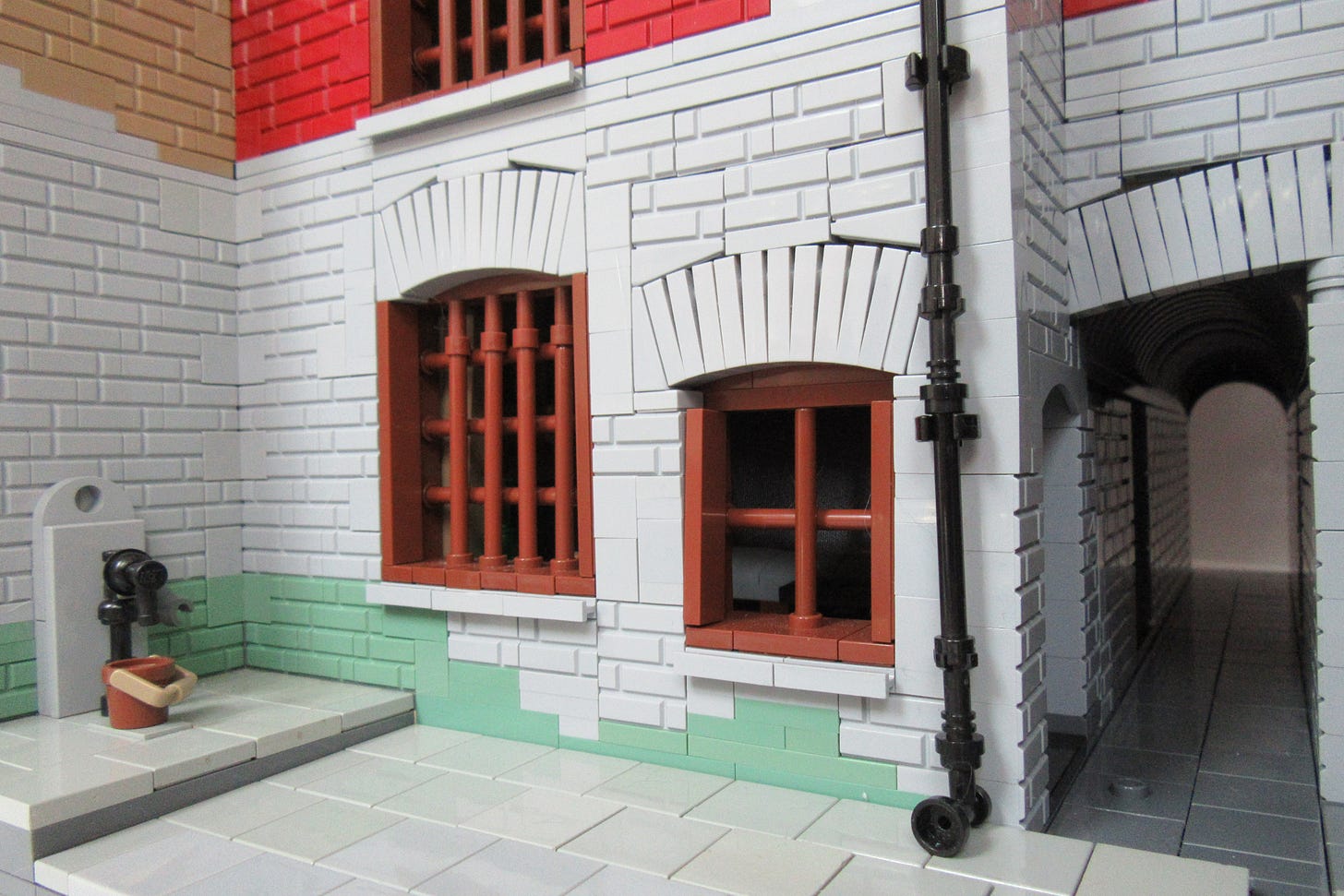This Substack blog will only concern my making of an accurate Lego model of Miller’s Court as it looked in 1888. The ‘court’, a cramped collection of tenements, had been built over the gardens of 26 and 27, Dorset Street, Spitalfields, East London. The place was demolished nearly a hundred years ago but I’m interested in rebuilding it, again.
In 2016, I spent most of my spare time researching and building a Lego model of this 18th century house to provide a clearer context for the infamous unsolved murder at number 13, Miller’s Court. I’d found the police descriptions and witness accounts of the circumstances confusing, so I started building a scale model based on the photographs of the front and back of number 26. I then joined the two recreations together, following a floor plan, and kept adding details that I could find a reasonable source for, ending up with a full model of the house and the court behind it.
By the end, I’d more questions than answers about this very unlikely location for a murder. A room with broken windows surrounded by a close huddle of a dozen tenements that were busy 24 hours a day. And few clues about the internal layout of the house itself.
My most valuable reference has been Fiona Rule’s thoroughly researched book The Worst Street In London (2008), devoted to the entire history of Dorset Street and its widely changing fortunes. After learning about the appalling conditions around Spitalfields at that time, I wanted the model to try and show how Mary Jane Kelly was living for most of 1888.
Obviously, Lego isn’t the ideal medium for Victorian squalor. Not great for filthy floors and walls, or people dressed in rags. Lego is widely regarded as a children’s toy, rather than a method for presenting historical research about difficult subjects. All of which makes me nervous about sharing photos or mentioning it along with my many other models.
But I’m no good at painting or making models any other way. I think a physical model has many advantages over 3D digital imaging, which I didn’t want to have to learn either. In 2014, I discovered my skill for building Lego models from paintings and photographs, so this was a logical project.
Focusing on the buildings still raised many mysteries, architecturally, for someone with little knowledge of the structures of the time, but also historically, like the numbering of the tenements (up to 20) being hard to figure out.
Since my first model of Miller’s Court in 2016, I’ve noticed various stupid errors, found better images to work from, and am doing more thorough research. I want to make as accurate a version as possible, while annotating the supporting information on Substack, stating precise reasons for any assumptions. I’ll be scrutinising in turn all the available photos, sketches and relevant accounts of the building’s details and debating their reliability and possible interpretation.
I won’t be describing any details of Mary Kelly’s murder, and certainly not showing the crime scene photos or sketches which are as ghastly as they are tragic. The murderer will remain an elephant in the room, having cast a spotlight on the worst street in London for poverty, crime and overcrowding.





